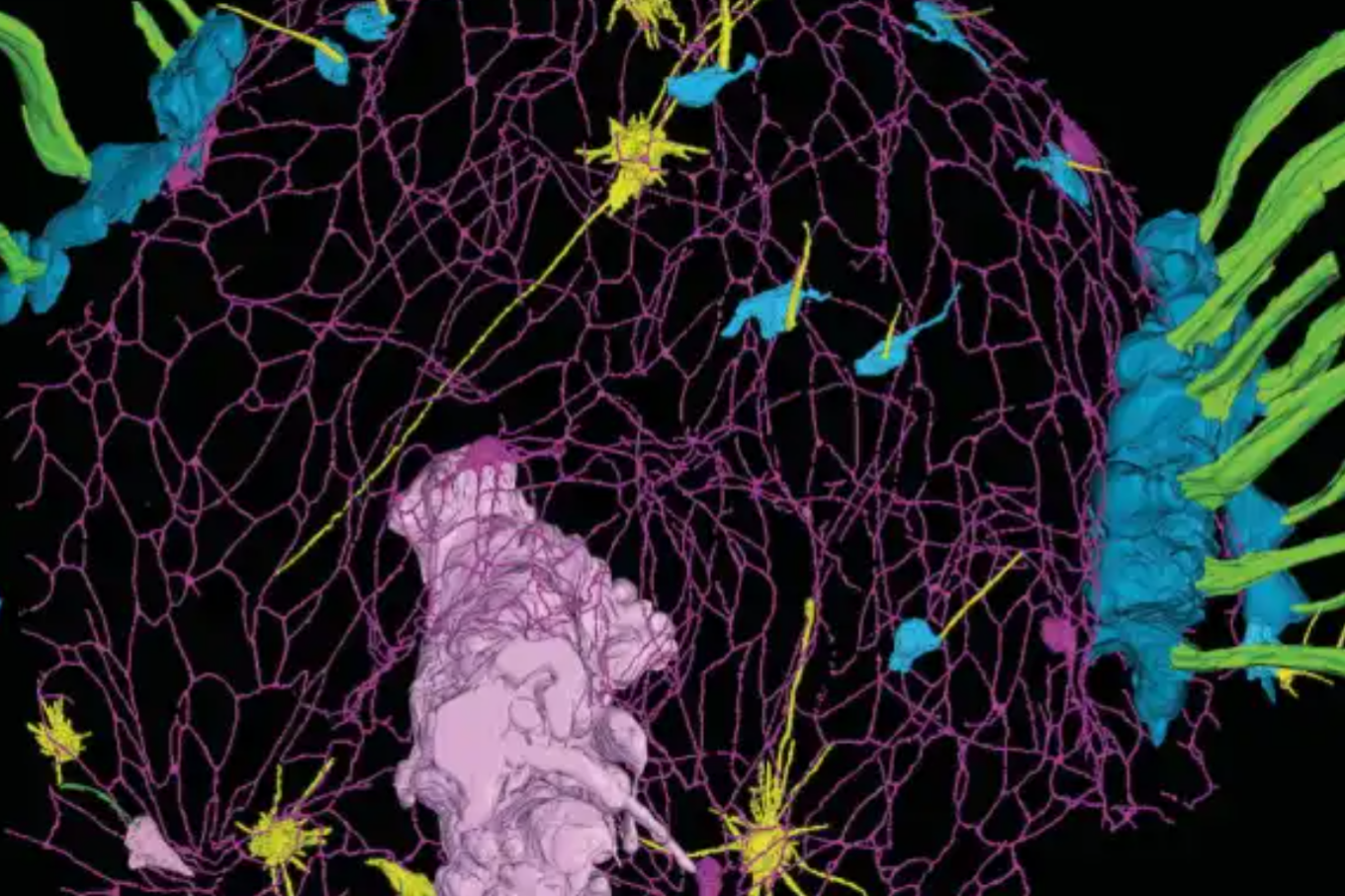Syncytial nerve net in a ctenophore adds insights on the evolution of nervous systems
View of an ancient brain
The evolutionary origin of nervous systems remains a fundamental question in biology. A hallmark of nervous systems is that they are composed of discrete cells (neurons) that communicate through synapses. Ctenophores, a sister group to all animals with nervous systems, play a key role in comparative studies into the evolutionary origin(s) of neurons and their connections. To establish neuronal circuits that facilitate ctenophore behavior, Burkhardt et al. used high-resolution three-dimensional electron microscopy, revealing that nerve-net neurons are not separate entities, but rather are interconnected through continuous neurite plasma membranes without evidence of synapses (see the Perspective by Dunn). The findings offer a new perspective on the evolution of neuronal networks and neurotransmission. —MMa
Abstract
A fundamental breakthrough in neurobiology has been the formulation of the neuron doctrine by Santiago Ramón y Cajal, which stated that the nervous system is composed of discrete cells. Electron microscopy later confirmed the doctrine and allowed the identification of synaptic connections. In this work, we used volume electron microscopy and three-dimensional reconstructions to characterize the nerve net of a ctenophore, a marine invertebrate that belongs to one of the earliest-branching animal lineages. We found that neurons in the subepithelial nerve net have a continuous plasma membrane that forms a syncytium. Our findings suggest fundamental differences of nerve net architectures between ctenophores and cnidarians or bilaterians and offer an alternative perspective on neural network organization and neurotransmission.
Date: 20 Apr 2023
Authors: PAWEL BURKHARDT, JEFFREY COLGREN, ASTRID MEDHUS, LEONID DIGEL, BENJAMIN NAUMANN, JOAN J. SOTO-ANGEL, EVA-LENA NORDMANN, MARIA Y. SACHKOVA, AND MAIKE KITTELMANN
Link: https://www.science.org/doi/10.1126/science.ade5645
Foto: Pawel Burkhardt y Maike Kittelmann
Nutrigenomics Institute is not responsible for the comments and opinions included in this article






